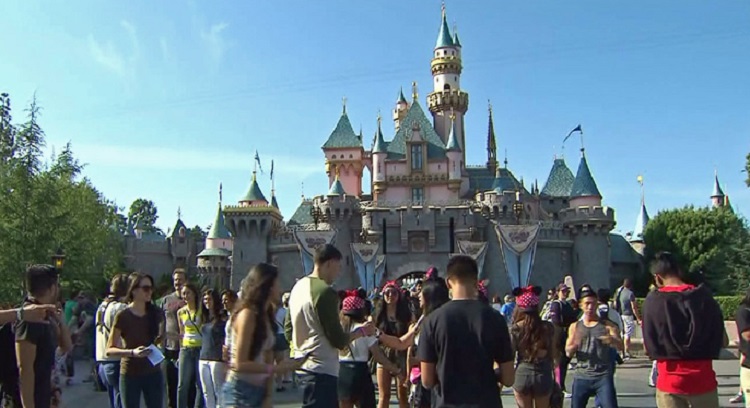
Earlier this year, health officials suspected that the nearly 200 Disneyland visitors who were infected with measles, are connected to parents who refused to vaccinate their children (anti-vaxxers). A new study has emerged that backs up that theory.
Since measles is highly contagious and can spread quickly and easily through the air, one infected person has the potential to spread it to thousands. In order to protect the population, “herd immunity” must be achieved. This means that more than 95 percent of the population needs to be immunized with the MMR vaccine (measles, mumps, rubella) which prevents them from contracting the disease.
JAMA Pediatrics published new research revealing that the people infected in the recent measles outbreak have vaccination rates that fall well below the 95 percent threshold. It is estimated by researchers, that rate couldn’t have been higher than 86 percent and possibly as low as 50 percent.
Researchers concluded,“Clearly, MMR vaccination rates in many of the communities that have been affected by this outbreak fall well below the necessary threshold to sustain herd immunity, thus placing the greater population at risk as well.”
The infected person responsible for the Disneyland measles outbreak, “patient zero,” has not yet been confirmed. Federal officials believe it was a foreigner who brought the infectious disease from overseas. The researchers say that measles was able to spread so quickly because of the clusters who families who chose not to vaccinate their children.
Maimuna Majumder, a research fellow at Boston Children’s Hospital and one of the authors of the new JAMA study, told Health Day, “The Disneyland outbreak is quite possibly a direct consequence of the growing anti-vaccination movement in the United States,” and she added that if that movement continues to grow, “the likelihood of outbreaks will increase — as will their scale and scope.”
Majumder argued that while experts theorized the measles outbreak was because of low vaccine rates, the JAMA study “confirms this suspicion in a scientifically rigorous way.” Other experts who were not part of that particular study made the same conclusion and expressed the same fears about the implications of her findings. Dr. William Schaffner is a professor of infectious diseases at the Vanderbilt University School of Medicine, and he said, “A level of protection against measles as low as 50 percent makes pediatricians, infectious-disease experts, and the public health community profoundly concerned.”
The JAMA study is the first to link the Disneyland measles outbreak to low vaccination rates, but other research has uncovered a similar trend on a larger scale across the United States.
Something to keep in mind: MMR is a two-shot series of vaccines usually given during childhood. Children should receive the first shot when they are between 12-15 months and the second when they are between 4-6 years of age. This leaves children under the age of 12 months vulnerable if and when they come in contact with an infected person. According to the CDC, severe complications from measles include pneumonia (infection of the lungs) and encephalitis (swelling of the brain). They may need to be hospitalized and could die.
- As many as one out of every 20 children with measles gets pneumonia, the most common cause of death from measles in young children.
- About one child out of every 1,000 who get measles will develop encephalitis (swelling of the brain) that can lead to convulsions and can leave the child deaf or with intellectual disability.
- For every 1,000 children who get measles, one or two will die from it.

You must be logged in to post a comment Login